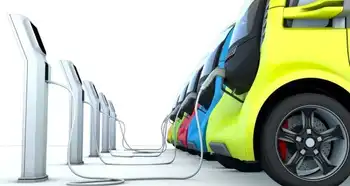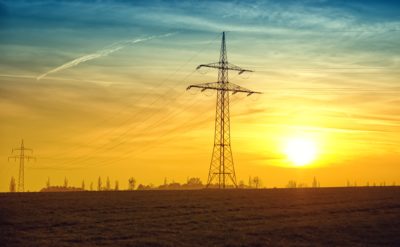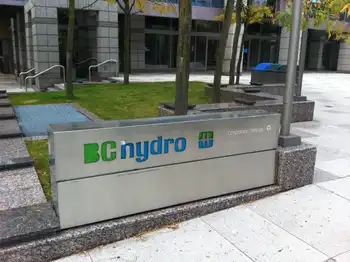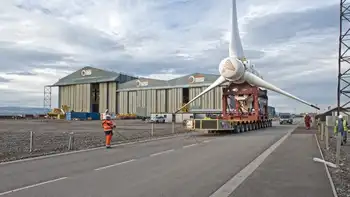Programs filed to reduce and shift peak demand
RALEIGH, NORTH CAROLINA - Progress Energy filed two programs with the N.C. Utilities Commission: one for residential load control and another to allow the electric distribution grid in the Carolinas to be used to reduce peak demand.
The programs are a key part of the company's strategy to double its energy efficiency portfolio to 2,000 megawatts (MW) and delay the need to build power plants. Progress Energy Carolinas will file additional energy-efficiency and demand-side management programs in early May, and expects to file for the same programs in South Carolina in the coming months. The company expects the regulatory commissions to act on the proposals later this year. Thereafter, Progress Energy will provide additional information on how customers can participate.
Consistent with the provisions of the state's energy bill enacted last year, Progress Energy Carolinas will seek commission approval of appropriate incentives. The company has proposed a 50/50 shared-savings model, under which the costs and benefits of these programs will be evaluated together, and the benefits of reducing peak electricity demand will be shared between customers and the utility.
The new residential program, called EnergyWise, will enable Progress Energy Carolinas to remotely adjust the air-conditioning units of voluntary customer participants during periods of peak electricity demand, particularly on the hottest summer afternoons, when demand is at its highest of the year.
Customers participating in EnergyWise will receive an annual $25 bill credit as an incentive. In the company's Western N.C. region, Progress Energy Carolinas also will offer programs that adjust strip heating and electric water heaters. Use of these appliances is a significant contributor to peak demand in the mountainous region, where electricity demand is highest in winter.
The company's goal for EnergyWise is to have the capability to reduce peak electricity demand by 200 MW by 2017, which will help delay the need to build peaking power plants.
The second program includes an investment in the 60,000-mile distribution system that serves 1.4 million customers in the Carolinas. The distribution system demand-response program will provide additional capability for reducing and shifting peak electricity demand, which will defer or eliminate the need to purchase or build a more expensive fossil-fueled peaking power plant.
The program also will reduce the level of natural electricity loss over long distribution feeder lines, eliminating the need for power generation to make up for the losses.
Customers also will benefit through better voltage quality to their homes and businesses, and, in future phases beyond 2012, through enhanced automation capabilities that will reduce the number and duration of power outages.
The program represents an expected investment of about $260 million over five years. At completion of the initial phase in 2012, it is expected to deliver nearly 250 MW of dependable peak-demand savings - the equivalent of two large peaking-power units.
The distribution system investment is a key component of a larger "Smart Grid" strategy. The 2008-2012 investment will provide a foundation for additional initiatives, including enhanced system reliability (through faster outage isolation and response) and new capabilities for incorporating renewable energy resources and other distributed generation into the region's energy mix.
"We all have an important role in driving more efficient use of energy and other resources," said Lloyd Yates, CEO and president of Progress Energy Carolinas. "In addition to the programs we're designing and offering to our customers, we're focused on ensuring that the power-distribution system that we operate on our customers' behalf is as efficient as it can be. In this case, it is less expensive to expand our capability to reduce customer demand through the distribution system initiative than to build a new peaking power plant. So, investing in the initiative makes sense for our customers and our company."
Meanwhile, the company is continuing its Save The Watts campaign, an educational initiative that features a highly interactive Web site (www.savethewatts.com) with energy-efficiency program details and useful tips for customers to save energy. The Web site provides a calculator for customers to measure their energy savings as well as their carbon footprint, a calculation of the individual's energy usage to reflect his or her contribution to greenhouse gas emissions.
Related News

GM president: Electric cars won't go mainstream until we fix these problems
DETROIT - The automotive industry is hurtling toward a future that will change transportation the same way electricity changed how we light the world. Electric and self-driving vehicles will alter the automotive landscape forever — it's only a question of how soon.
Like any revolution, this one will be created by market demand.
Beyond the environmental benefit, electric vehicle owners enjoy the performance, quiet operation, robust acceleration, style and interior space. And EV owners like not having to buy gasoline. We believe the majority of these customers will stay loyal to electric cars.
But what about non-EV owners? Will they want to…




